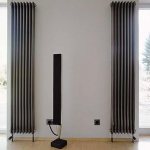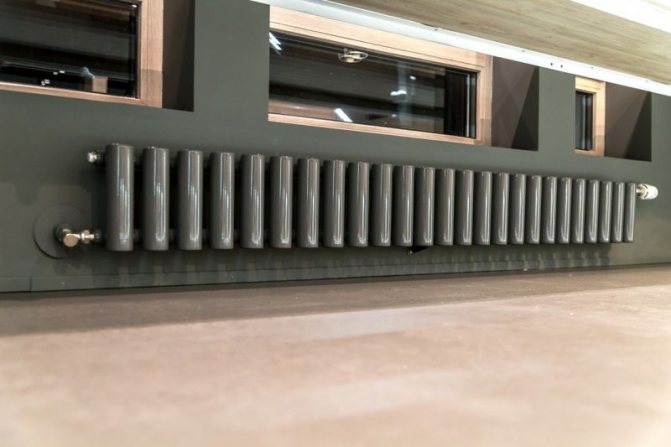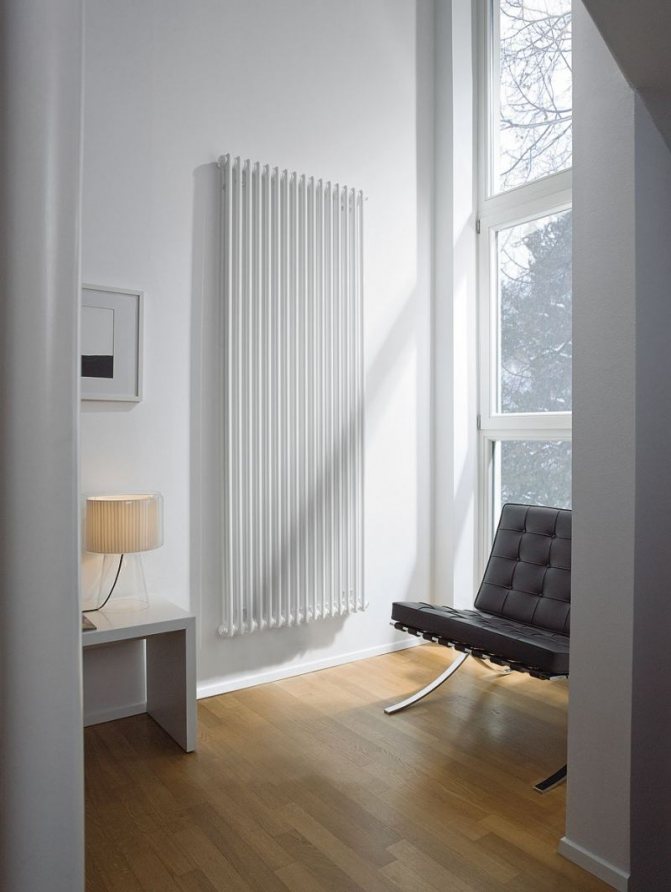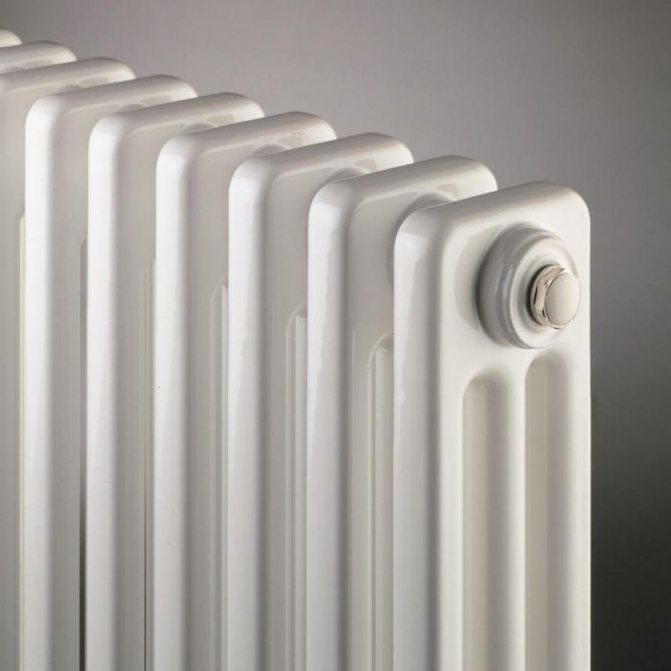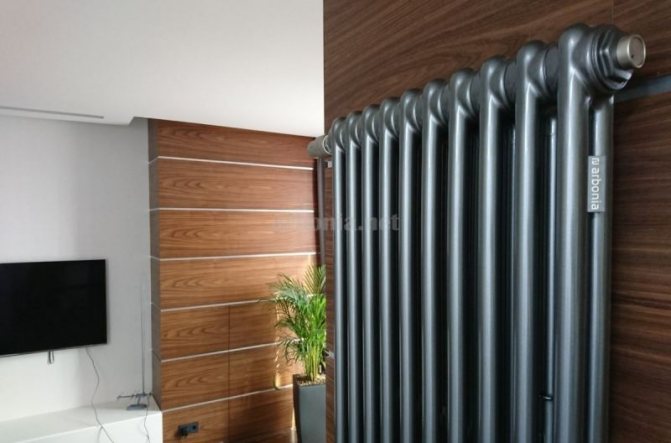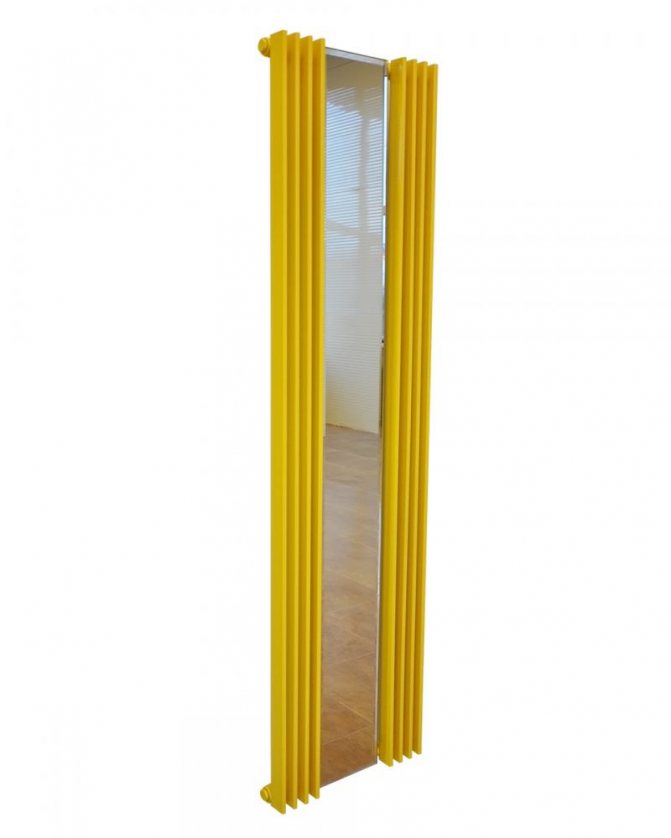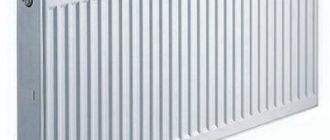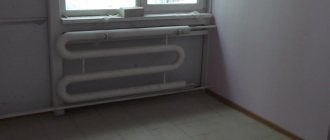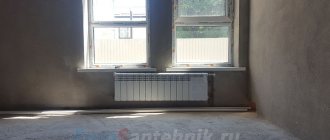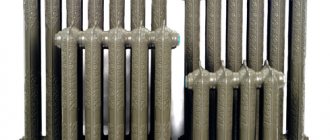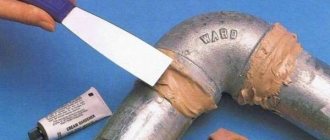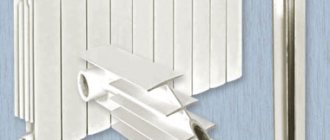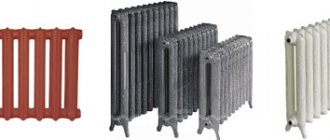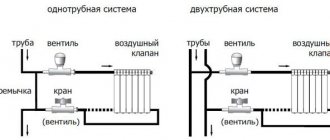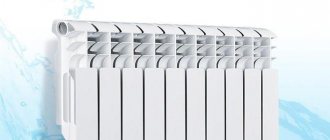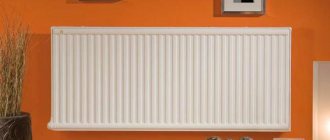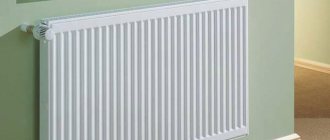Design features
The appearance of tubular batteries is slightly reminiscent of the design of cast iron radiators. The instruments include an upper and a lower collector, between which there are steel tubular bridges. To connect individual elements of the product, universal laser welding is used, which makes it possible to achieve accuracy and invisibility of the connecting seams.

A distinctive feature of all tubular heating radiators is their strength. On sale, they are presented in a significant variety in shape, size and color design: this greatly simplifies the selection of the most suitable heating device for the interior of a particular room.
Features of tubular heating radiators
For a long time, cast iron batteries have been the market leaders in heating appliances. These products are characterized by resistance to high pressure, corrosion resistance and aggressive heat carrier. It is impossible not to note their durability - they are able to serve for decades, not succumbing to the influence of external factors. Despite the presence of indisputable advantages, they also have certain disadvantages - these are bulkiness and gigantic weight.
Many users point out a rough surface as a disadvantage, into which atmospheric dust literally eats. As a result, cleaning becomes difficult.


Steel heating radiators are the forerunners of modern tubular devices.
With time bulky, heavy and inconvenient batteries were replaced by light steel radiators. Compared to cast iron, they look weightless. They began to be installed back in Soviet high-rise buildings, where durable and light steel appliances have safely survived to this day. Today they are widely used for heating houses and apartments, they please with excellent technical characteristics. Why are steel batteries so good? But what:
- ease of installation - they are really easy to install, since they are lightweight (for comparison, try to lift one cast-iron "accordion" yourself);
- high heat transfer is one of the most important advantages. In this parameter, they surpass many other batteries, for example, bimetallic or aluminum;
- an abundance of models.
Steel radiators fall into two broad categories. The first includes widespread panel steel models, the second - tubular steel heating radiators, differing in design.
What are steel tubular radiators


The width of standard tubular radiators, depending on the number of rows of pipes in the battery, varies from 85 to 225 mm.
How tubular radiators are arranged can be understood by their name. It is easy to guess that they consist of steel pipes connected by collectors. The tubes themselves can be round, oval or rectangular, straight and curved, vertical and horizontal. A hot coolant circulates through them, giving off heat to the heated rooms.
The tubular design makes the radiators look great. They can be assembled in horizontal and vertical rows, combined with collectors at the top or at the back. Some models almost completely copy the appearance of cast iron batteries. What is it for? The thing is that such batteries are used to create retro-style interiors.Having executed them in the old style and painted with texture dyes, manufacturers achieve a stunning effect, and consumers rejoice in the retro look of heating appliances.
Strong steel is used as a starting material for their manufacture. It is resistant to aggressive coolant and pressure up to 10-15 atmospheres. Heat transfer is determined by the design features of certain types of batteries - the diameter and length of the tubes, as well as the distance between them, are taken into account. For some models, the heat transfer rate is up to 205 W per section (for standard battery sizes).
It should be noted right away that steel tubular heating radiators can have a variety of sizes. On the market there are:


For your interior, you can easily select heating devices of non-standard heights.
- batteries of standard sizes (with a center distance of 350 or 500 mm);
- low models for installation under panoramic windows (similar to an ordinary bench, both in appearance and in size);
- high vertical models (made specifically for heating narrow and / or high rooms, such as staircases and bathrooms).
A variety of technologies are used to weld pipes into one product. The most advanced of these is laser welding. It allows for a reliable connection and high pressure resistance due to strong seams. In any case, the design of the radiators is non-separable, which eliminates leaks.
The center-to-center distance in tubular steel radiators is up to 3000 mm. Customers can choose from both standard models and custom made models.
Decorative tubular batteries
We have already said that steel tubular heating devices can have a wide variety of sizes and shapes. As for the tubes themselves, they are straight or curved at various angles. Due to the flexibility of the design, it becomes possible to create designer models of radiators used for installation in rooms with interiors made according to individual projects.
Aluminum and bimetallic radiators have a rather austere appearance. And this is understandable, because they are made in the form of several sections, connected with each other using special nipple connections. The only design touch for such batteries is their coloring - some manufacturers paint the batteries to order.


Radial models will bring to life any fantasy of designers.
There are tremendous opportunities for designers with tubular batteries. On their basis, radiators of a classic look, design models from flat anodized or chrome-plated pipes, interesting options from bent pipes, original radiators from pipes of arbitrary size and diameter, products with a shiny or aged color are created - here the imagination is limitless. If you want to make an exclusive renovation in your home, be sure to pay attention to tubular steel radiators.
Designer models of tubular steel radiators will serve as a worthy decoration for your home. But their cost may seem very high - this is a feature of non-standard solutions.
Optimal installation location
With the help of steel tubular radiators, it is generally customary to equip heating systems with private houses and five-story buildings. High-rise buildings are an unsuitable place for their installation due to frequent water hammering: given that the working pressure of a steel tubular battery is only 6-10 atmospheres, this is fraught with serious consequences.
Any serious pressure surge in the system can cause leakage and damage to the device. Autonomous heating systems are characterized by a lower level of operating pressure - no more than 8 atmospheres.This makes it possible for the tubular radiator to comfortably transfer all overloads inside the circuit.
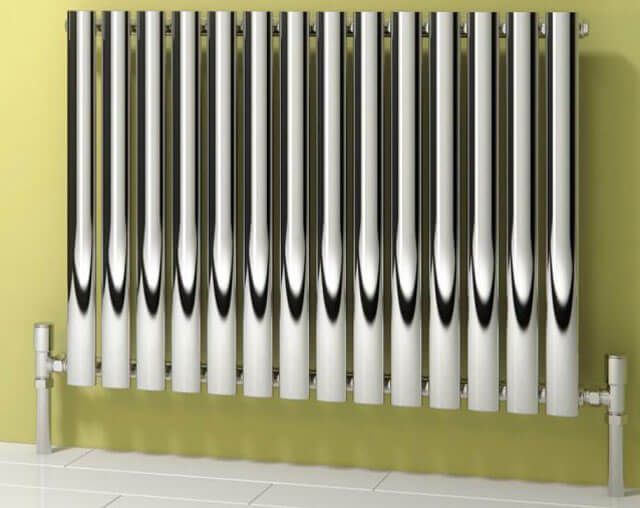

Quite often, medical institutions are equipped with such devices: this is facilitated by the high hygienic characteristics of batteries and a low level of trauma. There are no sharp corners on the products, all bends are smooth and smooth here. In addition, steel tubular radiators are an order of magnitude more durable than their cast-iron counterparts.
Advantages and Disadvantages of Steel Heating Pipes
Due to the emergence of polymeric materials for heat supply, the use of steel pipes in the standard scheme is becoming less and less relevant. However, in some cases, they are the only option. This is due to their unique properties.
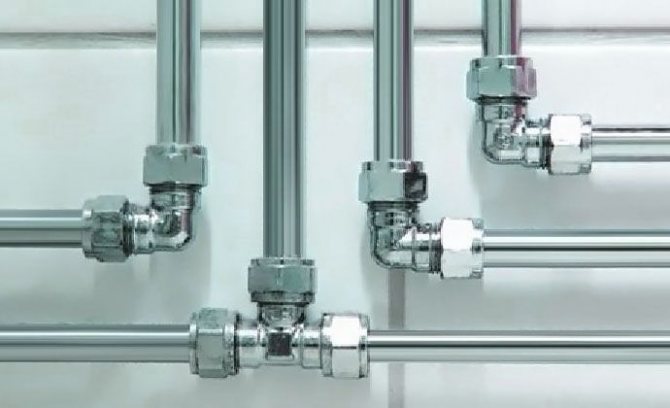

Steel pipes in heating
The consumer is primarily interested in the service life of steel pipes for heat supply. It is determined by the parameters of the system, as well as the initial characteristics of the material of manufacture. The larger the pipe wall thickness - the longer the period of its maintenance-free operation. However, this increases the mass of the structure, which affects the laboriousness of installation. In addition to these properties, when analyzing the relevance of choosing steel pipes for heat supply, the following factors should be taken into account:
- Corrosion protection... This requires painting the outer surface of the pipe;
- Flushing the system... Performed according to the previously drawn up schedule. When choosing methods, the properties of the pipe material are taken into account;
- Good mechanical strength... They are often used for the manufacture of heating registers. However, this increases the volume of the coolant in the system;
- Particular attention is paid to the quality of the connection... Pipe joining is best done with a welding machine.
Installation of steel mains heat supply is relevant in industrial premises, commercial and public buildings. The reason for this is the high degree of mechanical strength. Installation in autonomous heating systems of houses and apartments is impractical. It is best to use polymer analogs instead.
Manufacturers in the nomenclature of steel pipes indicate their inner diameter. This must be taken into account when calculating the volume of the coolant in the heat supply.
Characteristics of tubular heating batteries
The material for the manufacture of tubular radiators is most often steel, which gives them special strength and reliability.
Main technical parameters of tubular steel radiator:
- Height... It can be from 30 to 300 cm.
- Number of pipes... There are no restrictions here: there are models with one tube, and there are models with a much larger number of jumpers.
- Depth... Approx. 225 mm. One row can contain 1 - 6 elements. The formation of the cost of the device is influenced by the working volume and parameters of the jumpers.
- Sectional Distance... There are two options: 65 and 45 mm. Radiators with a section pitch of 65 mm are mainly used in hospitals, schools and other institutions where there are very high hygienic requirements.
- Wall thickness... It can be from 1 to 2 mm. For Western products, a thickness of 1-1.5 mm is characteristic. For domestic devices, it is slightly larger - 2 mm.
- Section section... The standard version is round tubes with a diameter of about 25 mm. Less commonly, you can find products with flat, rectangular, oval and triangular sections.
Features of the operation of steel pipes and radiators in heating
Before making the installation of steel heating radiators, you should find out their qualities and factors affecting the operation. Water is often the heat carrier in the heat supply. It is she who determines the duration of the maintenance-free operation of the system components.


Steel radiator in the heating system
The use of steel as the main material for the manufacture of heating elements due to its affordable cost, relative ease of processing and good technical qualities. Steel heating panels and pipes have the same characteristics. However, negative points appear during operation. They consist in a decrease in wall thickness, a decrease in thermal conductivity.
This is due to the fact that steel pipes for heating and radiators made of this material are characterized by the following qualities:
- The appearance of corrosion... The oxidation process is natural regardless of the volume of the steel radiator. To reduce its speed, the water must contain a minimum of oxygen;
- Rough surface. This affects the hydraulic resistance indicator;
- Light weight... Often, the installation of steel heating radiators can be done without help. This is due to the small wall thickness - from 0.8 to 1.2 mm;
- Loss of appearance due to poor paint quality... It is recommended to choose the model of batteries, the surface of which has been treated with a powder method.
Also, standard installation technologies can cause difficulties. If steel plate heating radiators are installed without any special problems, then a welding machine is needed to fix the pipes. The connection of assemblies with threaded couplings is not effective.
Often, the service life of steel heating pipes directly depends on the quality of the weld. For its formation, it is necessary to choose the right electrodes and the operating mode of the welding machine.
Main varieties
Horizontal and vertical steel radiators are distinguished by the type of tube arrangement. Large offices and halls are usually equipped with horizontal appliances. The scope of vertical tubular batteries is in private homes, hospitals and schools. The design features of vertical models contributes to a visual increase in the height of the premises. In addition, they hardly accumulate dust.
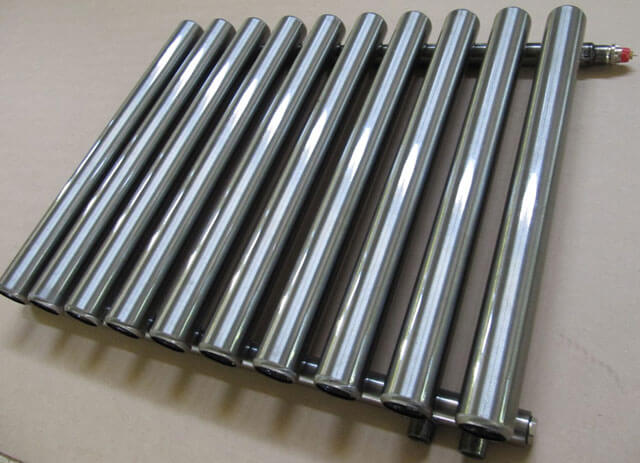

The shape of this type of heating devices can be angular, flat, radius and design. In corner models, two sections are used, which are located at a certain angle to each other. In this case, it is possible to adjust the angle, depending on the characteristics of the interior. Flat models are characterized by a single-row arrangement of tubes: this form of the device is the most popular among buyers. The radial configuration assumes the presence of an arc. Designer models are designed with special originality. One option is to bend the vertical tubes to create a wavy effect.
Differences between tubular systems
Radiators of any shape have a special subdivision into types depending on various factors. Tubular can also have several possible variations.


The largest separation is depending on the appearance of the device, namely, on the location of the pipes. These can be vertical and horizontal tubular heating radiators.


The first version of tubular radiators is the classic choice for private homes and medical institutions. They look beautiful, neat and do not accumulate dust on themselves.
But the second type - horizontal - is the choice for large office premises, where it is necessary to heat large areas.


Due to the peculiarities of the shape, there are no frames when choosing tubular radiators. These can be models for an angular arrangement, and simple flat ones, and any design ones.


- Cast iron heating radiators: description of the best models, installation and characteristics of radiators (120 photos)


Flushing heating radiators: purging, cleaning and maintaining the heating system (115 photos)
- Gas convectors - choice, features of use and owner reviews (video + 105 photos)
Most often, people choose just ordinary options, but in some cases they are made to order in the form that is closer to the homeowners.
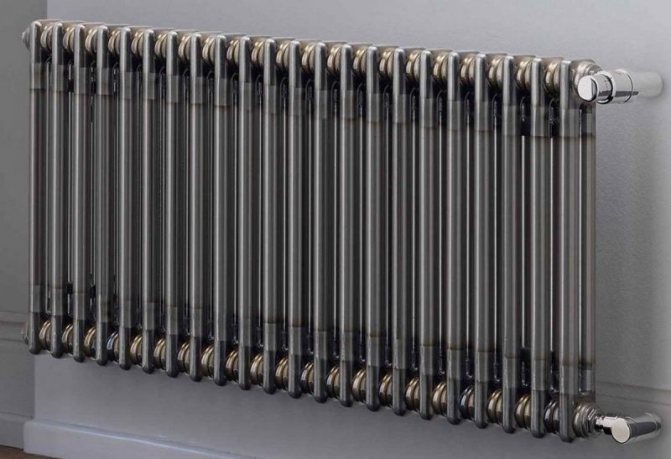

Advantages and disadvantages
When considering a steel tubular radiator as a potential option for equipping your home, you need to become familiar with its strengths and weaknesses.
Advantages of tubular radiators:
- Resistant to increased water hardness... Corrosion is almost unknown to these batteries.
- A significant number of color and shape options... This makes it much easier to choose the most suitable option for the design of the room.
- Security... There are no sharp corners on products of this type, which explains their popularity in families with small children.
- Easy to operate and maintain... The design of the tubular radiator does not contribute to the accumulation of dust. They are easy to clean and repair. Adjusting the water supply is very convenient here. If desired, the device can be placed under plasterboard sheathing.
- Convenience of commutation... Modern models allow both bottom and side connection.
- Reliability... For production, only modern materials and the latest technologies are used.
- The optimum ratio of price and quality.
Installation and installation of tubular heating radiators
When choosing tubular batteries, be sure to pay attention to the presence of additional protection against corrosion - this will ensure a long service life of the entire heating system. The manufacturer's brand deserves special attention. The optimal choice is the products of European or domestic brands. The price of steel tubular heating radiators of Russian production starts from 3-4 thousand rubles for 8 sections (as of May 2016). The prices for foreign batteries are higher.
What you shouldn't trust are Chinese manufacturers who like to save on materials and make radiators that do not stand up to criticism. Give preference to domestic, German, Italian and Swiss brands - for which there is enough money.


Installation of such devices is quite simple, the main thing is to purchase special mounts.
For the installation of tubular radiators, special wall mounts are used. They should be installed on the walls in advance using screws and dowels. Too strong fasteners are not needed, since the radiators are relatively light. The heating pipe connection diagram can be absolutely any. If you want to make a bottom connection, purchase batteries with bottom inputs and outputs. Radiators for lateral or diagonal connection are selected in the same way.
Steel tubular radiators can be used in open and closed heating systems, with natural or forced circulation of the heat carrier. They are also allowed to work in one-pipe systems. Thus, there are no special requirements for their installation and operation. With regard to installation in apartment buildings, you should first familiarize yourself with the documentation for the radiators and make sure that they can work at increased pressure.
Decorative benefits
Tubular radiators are characterized by special grace and lightness. If desired, you can find models of non-standard configuration (semicircular sections, radiator benches, etc.), the cost of which is much higher. Especially worth noting is the wide range of colors of tubular steel appliances.
The most popular are light and dark solutions. Darker radiators have better heat dissipation. Bronze, metallic, lacquered wood, mother-of-pearl, aged bronze are considered more interesting color schemes. Good efficiency is observed in chrome-plated products.
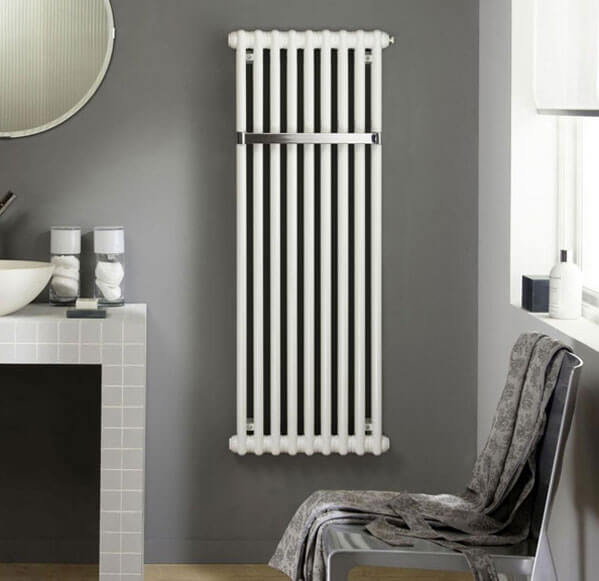

In such popular interior styles as vintage and loft, you can find more original design of heating devices. In some cases, special anti-corrosion agents are applied to the metal surface.
A transparent varnish is used as a finish. An example of design is the use of grilles to make the radiator more aesthetic. In addition, this creates additional protection against mechanical stress. You can choose a mesh of almost any shade: the price remains stable.
What are the radiators and how they differ
By design, all hydraulic heating devices can be divided into four main types: sectional, panel, tubular (heated towel rails are also included) and convectors.
Sectional heaters
Such devices consist of separate heating elements-sections. Sectional heaters can be made of aluminum, cast iron, steel, as well as the so-called bimetallic (having an aluminum body and a steel pipe through which the coolant moves). The sections are connected to each other using nipples, and seals are installed between the sections. Most often, gaskets are made of rubber, which is normal when using water as a heat carrier, but unacceptable when using antifreeze as a heat carrier, because rubber can be destroyed by its aggressive action (in such cases, special seals are used in modern heating devices).
Panel (non-sectional) heating devices
These are mainly steel panel radiators. The design of a panel radiator is, roughly speaking, two steel sheets welded together (usually 1.25 mm thick) with vertical channels, in the cavity of which the coolant circulates. To increase the heated surface, and, as a consequence, heat transfer, steel U-shaped ribs are welded to the rear side of the panel.
Tubular heaters
In most cases, the design of such radiators consists of vertically positioned curved steel tubes connecting the upper and lower manifolds. It should be noted that steel tubular radiators are usually the most expensive type of radiators (in terms of 1 kW).
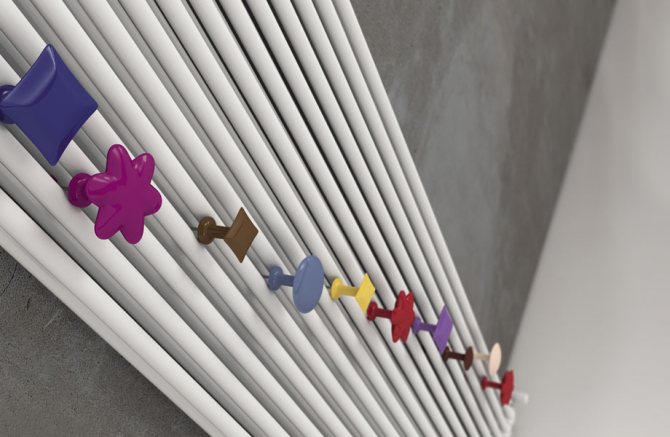

Convectors (or plate heaters)
A convector, figuratively speaking, is one or several pipes (along which the coolant moves) with metal “fins-plates” “put on” them. The air flows through the convector from bottom to top, warming up from numerous warm fins. Such heating pipes are usually made of steel or copper. In some convectors, the amount of heat flow is regulated by a special damper, opening or closing which, you can increase or decrease the flow of moving heated air. The design of the convector can be completely open or closed with a decorative casing (in wall and baseboard versions). Convectors built into the floor are covered with a decorative grill.
Steel Tubular Radiator Market Overview
Tubular steel radiators are represented on the sanitary equipment market in a significant variety. Along with the standard designs, you can find real works of art. The same goes for the variety of manufacturing firms.


For our conditions, the most suitable option are radiators from domestic companies, in the manufacture of which the Russian climate, water characteristics, features of heating systems and other important parameters are taken into account. As for foreign products, German, Czech, Turkish, Polish and Italian models are of the highest quality.
Steel Radiator Models
Unlike pipes, the popularity of steel batteries does not decline.This is due to the large assortment of models, the ability to choose several types of structures. But at the same time, reviews of steel heating radiators indicate the dependence of the quality of the product on the parameters of the materials used and compliance with the assembly technology.
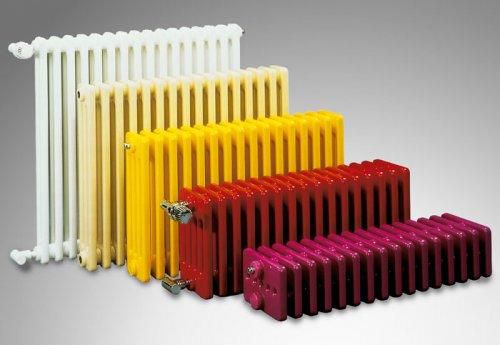

Types of steel radiators
Regardless of the model chosen, its defining parameters are heat transfer, overall dimensions and connection methods. The installation of steel heating radiators and further operating rules will depend on these characteristics.
There are currently three types of steel batteries to choose from:
- Panel... They refer to the budget option for the arrangement of heat supply, although there are also expensive models. Steel flat heating radiators consist of small diameter pipes that are connected using plate heat exchangers with heating panels. Power is determined by their number and overall dimensions;
- Tubular... They can be found much less often than the ones described above. This is due to the complexity of manufacturing. Despite the fact that reviews about steel tubular-type heating batteries are almost always positive - their range is small;
- Sectional. Outwardly, they look like cast iron batteries. They can also consist of several sections, which are interconnected by threaded components. The difference lies in the characteristics of the material of manufacture. Steel has a higher thermal conductivity than cast iron. Therefore, the former are characterized by low heat losses during power transmission.
In addition, when choosing, the dimensions of steel heating radiators, their nominal and maximum pressure, as well as the temperature regime of the heat supply are taken into account.
For centralized heating systems, the use of flat steel radiators is not recommended. They quickly fail with pressure surges typical for this type of heat supply.
Turkish
They differ in quite good quality. At the same time, the assortment of Turkish steel batteries is distinguished by some scarcity of assortment. As a rule, these are panel radiators of a fairly inexpensive cost. Licensing of products is mainly carried out by well-known Western European firms, which allows you to be calm about their quality.


German
Especially worth noting is the high quality of the tubular steel radiators of the German company Zehnder. The products of this company are distinguished by a significant technological variety, with the ability to connect to hot water pipes, open hot water heating systems and electrical circuits. German plumbing firms specialize in non-standard heating devices. These models can be very tall or super low, with a very rich color gamut (700 shades). Consider the high cost of Zehnder products.
Speaking of German radiators, the Swiss-German company Arbonia is worth mentioning. These products are distinguished by their excellent design, high technical characteristics and quality. At the same time, the cost of Arbonia heating devices is quite acceptable for a domestic buyer.


Installation rules for steel radiators
The technology for installing components of heat supply systems directly depends on the chosen model. One of the advantages of steel flat heating radiators is their heavy weight. Those. the load on the wall where they will be mounted is reduced. It is important to choose the right installation location. To do this, during the installation of steel heating radiators, it is necessary to be guided by a certain procedure.


Diagrams for connecting batteries to heating
The installation location is determined first. This is usually the outer wall through which the greatest heat loss occurs. Unlike steel pipes for heating, radiators must have maximum heat transfer.If the installation is carried out under a window, the battery should overlap the structure by 2/3. This will improve the convection rate of the air currents.
During the installation of steel heating radiators, it is recommended to follow these rules:
- The intersection of the central axis of the battery must coincide with the same parameter of the window structure. Allowable deviation - 2.3 cm;
- The minimum distance from the floor plane to the steel heating panel varies from 6 to 10 cm;
- Controlling the location. This parameter is checked using the building level. All heat supply devices in one room must be at the same height;
- The choice of connection method - side, top or bottom. Reviews of steel radiators indicate a good appearance of the device with a bottom connection. But this depends on the specific battery model;
- Compliance with the installation order. First, steel heat supply radiators are installed, and then they are connected to the system;
- Installation of additional components. These include shut-off valves, thermostats, Mayevsky taps.
At the end of the installation of steel heat supply radiators, pressure testing is performed, the integrity of the joints is checked. When filling the system with a coolant, it is necessary to open the Mayevsky cock to remove air.
All models of steel plate heat supply radiators have a non-separable design. They cannot reduce or increase the heating surface area. This is taken into account when choosing.
Italian
Italian radiators are characterized by a high level of quality and excellent decorative characteristics. At the same time, one should take into account their adaptation to European operating conditions, which differ from the realities in our country. However, high technical characteristics and convenient connections make Italian devices very popular. This is especially true of the products of the Royal company, which are distinguished by quality, ease of maintenance, reliability and durability. The cost of Royal radiators is quite high.
How to choose steel tubular heating radiators
In order for the device to be powerful enough and warm up the entire volume of the room, it is necessary:
- determine the area of the room, the height of the ceiling;
- calculate the amount of heat transfer for a given room. For a room (with a window and a door) with an area of 10 m2, 1000 watts is enough. In the technical characteristics of the radiator, the manufacturer indicates the heat transfer of one section (2-6 tubular) or the whole structure. The more tubes in the section, the more efficient the heating of the room, one drawback - the structure looks bulky. So, for example, a double-row section 560 mm high and 90 mm deep has a heat transfer of 160 W;
- according to calculations, select such a number of sections so that the power is sufficient;
- it is necessary to add additional sections if the room is cold, corner, from the north side;
- 4% must be added to the calculated heat transfer if the ceiling height is more than 3 m;
- placing a radiator in a niche or under a plasterboard panel with slots reduces space heating by 5-15%;
- choosing a darker battery color increases the heat emission.


The shape, size and number of radiator sections can be any, depending on the area of the room and personal wishes
Chinese
The most budgetary model of a metal tubular radiator is the Chinese-made Oasis battery. Despite its low cost, the device is distinguished by good durability, resistance to aggressive effects and the absence of operational restrictions. A number of models are manufactured taking into account the specifics of domestic heating networks. Tubular heating batteries Oasis have the most positive reviews.The company also specializes in the manufacture of standard bimetallic heating radiators with excellent thermal performance and affordable cost.
Product characteristics
Functional parameters of steel tubular radiator:
- working environment temperature 110оС - 130оС;
- working pressure 10 - 22 atm (depending on material, manufacturer and configuration);
- corrosion resistance (polymerization of internal surfaces, wall thickness 1.5-2mm);
- hygienic surface (an additional antibacterial layer is applied);
- light weight;
- the service life is 10-25 years.
Advantages of steel tubular radiator:
- a wide range of forms of structures, the possibility of individual selection of configurations and external coating (painting, varnishing, structural coating, galvanizing);
- low inertia, good heat transfer, uniform heating of the room;
- reliable welded connection;
- smooth inner and outer surface;
- ease of care (does not require frequent dust removal due to design features);
- safety of form, absence of sharp corners;
- the ability to fit into any interior, save space;
- many connection schemes.
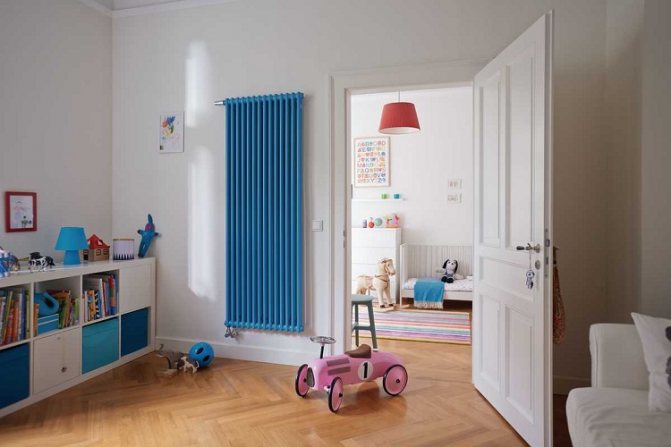

Radiators feature a high degree of safety and do not require the installation of protective screens, even in children's rooms
Disadvantages of a steel tubular radiator:
- high price;
- not resistant to pressure drops in a centralized system;
- spot welding is not reliable with frequent water hammering;
- thin-walled pipes (1mm) without additional coatings are susceptible to corrosion and abrasion due to the aggressive medium of the coolant (impurities, solid particles).
Important! For apartment buildings with a centralized heating system, you should choose a device made of high-quality steel with the following parameters: operating pressure not lower than 13-15 atm, coolant temperature not lower than 120 ° C.
Often, disadvantages are manifested in connection with improper or poor-quality installation (leaks, corrosion), incorrect choice (low heat transfer). In order not to be mistaken and choose the desired tubular heater, you should take into account the nuances.
